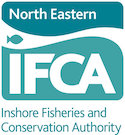(ELSI) Partnership Project
The North Eastern IFCA has won a bid for research funding under the DEFRA’s Fishing Industry Science Partnership (FISP) programme. This 2-year project in collaboration with the Holderness Fishing Industry Group (HFIG) is an important step for the pro-active management of the lobster fishery in the NEIFCA district. The aim of this project is to test an existing method of data collection to sample newly settled juvenile European lobster known as early benthic phase (EBP) lobster.
ELSI Project Summary
The ELSI project will adapt proven methodology used in the American lobster fishery of Maine, to gather data on the settlement of early benthic phase (EBP) European lobster. This will involve the deployment of larval settlement collectors filled with cobbles to simulate the natural habitat of EBP lobster; the collectors will be hauled from Spring to Autumn to record the abundance of EBP lobster across the sampling locations within the NEIFCA district. Environmental variables (salinity, temperature and current) will also be recorded to determine if there are environmental cues for the settlement behaviour of EBP lobster.
There are three key areas of research and data collection within the project:
- sampling EBP lobster from larval settlement collectors
- sampling planktonic lobster larvae using plankton tows
- studying the growth rate of lobster within a controlled environment.
Data on EBP lobster abundance and density will give an indication of the preferred habitats and environmental conditions for settlement at this stage in their life cycle, as well as testing the feasibility of this method for use on the European lobster population. The successful trial of this methodology on a European lobster population is the first step towards developing a proactive approach to the sustainable management of the lobster fishery. Once a substantial amount of data has been gathered, NEIFCA will look to develop a larval settlement index, which will use data on the number of EBP lobster settled in an area, within a model to predict the recruitment of these lobster into the fishery in 5-8 years’ time once they reach minimum conservation reference size (87mm). The project itself will run over the course of two years, with the hope that this research can be extended into a full annual monitoring programme.

Figure 1 - Image of early benthic phase (EBP) juvenile lobster (Hommarus gammarus)
Fishing Industry Science Partnership scheme
The Fishing Industry Science Partnership scheme grants funding for projects that will improve the knowledge of our fisheries through data collection and research to support sustainable fisheries management. The ELSI project aligns with these objectives through the collaboration of NEIFCA and the Holderness Fishing Industry Group (HFIG) to:
- test methodology
- gather data
- and develop proactive management strategies
to support the sustainability of the European lobster fishery within the NEIFCA district.
Project Partners Holderness Fishing Industry Group (HFIG)
Holderness Fishing Industry Group (HFIG) is a not-for-profit fishers association that has membership from the nearshore, inshore and offshore fishers of the Holderness Coast ranging from Flamborough Head southwards to Spurn Point. HFIG supports sustainable fishing efforts across the industry to ensure the prosperity and future of the fishery. As project partners HFIG will operate their fishing industry owned and operated, research vessel RV Huntress to gather data from sampling sites along the Holderness coast. NEIFCA’s enforcement and research vessel North Eastern Guardian III will play the same part in data collection by sampling across the northern area of the district. The Yorkshire Marine Research Centre, HFIG’s community laboratory and lobster research centre, will also be involved in the ELSI project by use of the hatchery and laboratory facilities to investigate growth rate of hatchery reared lobsters, and analyse samples taken from plankton tows and larval settlement collectors.
What happens next?
The first phase of the project will be the preparation and trialling of equipment and developing the survey design. This will entail:
- procurement of equipment and materials
- construction of larval settlement collectors
- trialling and adapting designs of larval settlement collectors
- testing data loggers
- procuring egg-bearing lobsters for larval hatching and rearing, for growth rate studies
- selecting sampling sites
- engage with the industry and the public
You can look out for updates on our new ELSI project on the NEIFCA website and social media pages!
